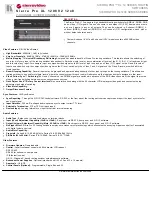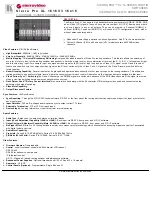
104
To do…
Use the command…
Remarks
Restore the space of a storage
medium
fixdisk
device
Optional
Available in user view
Format a storage medium
format
device
Optional
Available in user view
CAUTION:
•
When you format a storage medium, all the files stored on it are erased and cannot be restored. If a
startup configuration file exists on the storage medium, formatting the storage medium results in loss of
the startup configuration file.
•
You can execute the
fixdisk
command for the storage medium on the master, but you cannot execute the
command for a storage medium on the slave.
Displaying and maintaining the NAND flash memory
The physical space of the NAND flash memory is divided into multiple blocks, each of which is
subdivided into multiple pages. The NAND flash memory is erased on a block basis and read on a page
basis; the memory spaces are allocated on a page basis.
Displaying and repairing bad blocks
Bad block ratio varies with products of different vendors. The frequently used area of the memory goes
bad easily. Bad blocks cannot be used to store data, and the system has to skip the bad blocks when it
allocates storage spaces to files. You can get the locations of bad blocks and repair them at the
command line interface.
Follow these steps to display and repair bad blocks:
To do…
Use the command…
Remarks
Display the number and location of
bad blocks in the NAND flash
memory
display nandflash
badblock-location
[
|
{
begin
|
exclude
|
include
}
regular-expression
]
Required
Available in any view
Repair bad blocks
fixdisk
device
Required
Available in user view
Checking files
After files are written to the NAND flash memory, use the following commands together to check the
content of these files.
Follow these steps to check files:
To do…
Use the command…
Remarks
Display the space distribution of
the specified file in the NAND
flash memory
display nandflash file-location
filename
[
|
{
begin
|
exclude
|
include
}
regular-expression
]
Available in any view
















































